The Gist
-
Leadership alignment needed. Without executive ownership of content operations, brands face silos, wasted budgets and scattered strategies.
-
AI strategy fragmented. Companies lacking centralized content leadership often deploy inconsistent AI tools, which drives inefficiency and higher costs.
-
SEO at risk. Poor coordination across teams leads to SEO cannibalization, which weakens visibility and reduces content impact.
Marketers are putting more focus on their content marketing activities to grow their brands. As a result, content marketing budgets are increasing. Eighty-one percent of marketers say demand for content doubled in the past two years, and about 65% expect it to grow five to twenty times more in the next two years. What’s more, according to the Content Marketing Institute, a significant portion of B2B marketers (around 46%) anticipate an increase in their content marketing budgets from 2024 to 2025.
The forms of content are changing, too. Companies are moving from reactive, single-format content published once on static sites to more proactive approaches. Content is now segmented, personalized, evergreen and regularly updated and repurposed across multiple formats and channels.
Finally, because of the changes in search engine algorithms, SEO strategies are shifting. Instead of keyword stuffing, they now focus on audience intent and semantically related phrases.
Companies must plan for more powerful, AI-enabled search capabilities, as these tools change how people search and engage with content. As a result, firms must have a dual focus on semantic relevance and AI readiness to stay competitive in the evolving digital ecosystem.
Table of Contents
Content Chaos Is Hurting Brands
All these changes are putting a strain on the overall enterprise because teams must work more closely across departments and specialties to keep the brand consistent. Many companies are also now unintentionally cannibalizing their own SEO efforts due to a lack of effective coordination across departments. This is particularly true within larger organizations where multiple content creators work in silos.
All of this demonstrates the need for an immediate transformation of how content marketing is being managed. To help bring sense to the chaos and conflicts that come with greater coordination, you need a content operations person, or COP for short. This cross-functional chief content operations executive would oversee all the content that a company creates across marketing, support, customer success enablement, recruiting and other teams.
The Case for the COP Role
The company’s current positions of content lead or manager are mid- or VP-level, and they typically focus on overseeing marketing content. However, a COP would be a C-level executive who would lead the development of a coordinated, company-wide, holistic content plan, as well as align the strategy with business goals and audience needs. The COP’s role also requires streamlining content workflows across the enterprise and eliminating redundancy to save the company money and speed up content production.
The COP would also establish a structured, cross-functional approach to content creation and distribution, maintaining ongoing audits to prevent duplication of effort. They would maintain a clear content calendar to avoid last-minute, expensive projects and consolidate content platforms and tools to cut unnecessary tech spend. Repurposing existing content would be a priority to maximize value without incurring new costs.
Additionally, the COP would make sure that all content meets brand guidelines and customer needs upfront, reducing the need for rework. They would simplify the customer journey by accelerating self-service options and offering content that helps customers find answers quickly and independently. Delivering consistent, high-quality and relevant content across channels would be central, with a focus on tailoring each element to specific customer needs, pain points and preferences to maximize ROI.
The COP would also focus on enhancing user engagement by providing timely, valuable content that aligns with customer goals, which helps build brand trust and loyalty. Coordinating content formats like video, blogs and guides would help reduce information overload and improve the customer experience, ultimately driving revenue. Finally, the COP would orchestrate the entire content lifecycle, from creation to repurposing and updates, while developing data-driven performance metrics.
Related Article: Top Customer Experience Metrics That Matter Today
What Makes a Strong Content Operations Leader
The COP will also help organizations usher in the AI era. Forty-two percent of marketers have already integrated generative AI, like GPT-4, into their strategies, which helps them with content creation and campaign management. While generative AI is rapidly growing in the content field, other emerging trends include voice-optimized content, interactive and immersive experiences, and the growing prevalence of user-generated content.
Since these developments are reshaping digital and analog content, a COP must have content experience. This should be in all the types of online and offline content that the organization is employing, as well as the types that may be used in the future. This includes marketing content, “knowledge base” articles, recruitment communications, customer enablement materials and user-generated content.
A COP must also have strategic thinking. They need to be able to align content efforts with business goals and customer needs to drive measurable impact. Meanwhile, technical proficiency is also a must; familiarity with the various content development and analytics tools and CMS platforms, as well as with emerging technologies like AI, are vital.
Data analysis is another critical competency. The COP must use metrics to evaluate the performance of the content, identify gaps and optimize for better outcomes. Strong collaboration and communication skills are necessary to align cross-functional teams across marketing, product and other departments, which helps build a unified approach to content.
Lastly, a dedication to continuous learning is crucial. With AI and personalization technologies rapidly advancing, the role will continue to change, requiring the COP to stay adaptable and forward-thinking.
Related Article: Immersive Fun: Inside Netflix’s New Phygital Venues
6 Steps to Establish Content Operations
The future looks bright for a COP and the organizations who employ them. To get started, here are six simple steps.
Make Key Organizational Decisions at the Top
The CEO and leadership team must embrace the idea of putting a COP on the organizational beat, because it requires a new way of thinking about content. What’s more, if top leadership isn’t aligned, the troops won’t know where to focus their priorities.
Conduct a Content Audit
Review all the audiences being targeted to identify consistencies with their personas and any duplication of effort. This helps prevent SEO cannibalization and surfaces opportunities to repurpose existing content across channels.
Structure the Organization
Have the developmental editors in each department report on a dotted line to the COP, forming a content steering committee. They can use the committee meetings to resolve conflicting priorities and identify possible synergies.
Establish a Shared Content Dashboard
Effective coordination between internal teams is crucial. Without it, enterprises risk SEO cannibalization, where multiple pages compete for the same keywords, which dilutes search visibility. Any misalignment between online and offline content can also create a disjointed brand experience. Lastly, conflicting KPI reporting approaches can result in misaligned efforts and difficulty assessing the overall performance of individual efforts. But with a company-wide shared content dashboard, firms can avoid these pitfalls and maximize the content for greater impact.
Establish the Gs
Organizations need a systematic and consistent approach to how their content will be handled online and offline. This includes consistent graphics, tone and voice, taxonomy and more. Any break in the expression of the brand can hurt the overall brand building strategy.
Develop a Single AI Strategy
Today, too many companies have multiple groups. These groups use their own LLMS, launch their own chatbots and use different generative AI tools These inconsistencies and others cost time and money.
Role of the Chief Content Operations Officer
This table summarizes the key responsibilities and strategic benefits of establishing a COP within a modern content-driven organization.
| Responsibility | Function | Strategic Benefit |
|---|---|---|
| Content Workflow Integration | Aligns cross-functional teams and content creators under a centralized strategy | Reduces redundancy and ensures brand consistency |
| AI Tool Governance | Establishes a unified AI and content tech stack across departments | Prevents tool sprawl and increases operational efficiency |
| Content Calendar Oversight | Maintains visibility over all scheduled content across channels | Minimizes last-minute work and improves coordination |
| SEO Strategy Coordination | Prevents SEO cannibalization and aligns with semantic search trends | Maximizes organic reach and improves discoverability |
| Customer Journey Alignment | Delivers content that supports self-service and addresses pain points | Improves customer experience and trust |
| Performance Measurement | Implements shared dashboards and data-driven KPIs | Enables accountability and ongoing optimization |
| Content Repurposing & Governance | Audits and refreshes existing assets for multi-format use | Extends content value while reducing costs |
| Strategic Planning | Aligns all content initiatives with organizational goals | Boosts ROI and demonstrates leadership value |
Why Leadership Must Prioritize Content Operations
With content increasingly playing a critical role in marketing success and AI-driven creation taking hold across organizations, it’s time to put a COP on your organization’s beat. All your internal stakeholders and stockholders will thank you for it.
Learn how you can join our contributor community.






